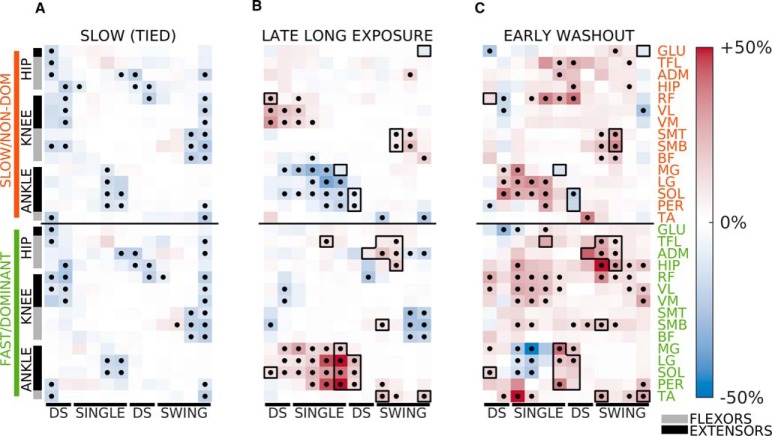Figure 3.
Steady-state muscle activity during slow walking, late split-belts walking, and aftereffects. Panels reflect differences in muscle activity the three epochs with respect to the reference (baseline) condition. Colormap reflects effect size and dots indicate FDR controlled significant differences (see Materials and Methods). Muscle activation variables were displayed starting with the ipsilateral heel-strike. A, muscle activity modulation during slow (tied-belts) walking. Most muscle-phases show reduction of activity, consistent with a monotonic link between walking speed and muscle activity amplitude; p value threshold: p = 0.022. B, muscle activity modulation during late adaptation. Broadly, patterns of activity are anti-symmetric, with groups of muscles increasing activity in one leg and decreasing contralaterally; p value threshold: p = 0.022. Differences between the slow leg’s activity at late long exposure (B, top) and slow (tied) baseline (A, top) illustrate that split-belts patterns do not match the expectation from simple ipsilateral speed modulation. C, muscle activity modulation during early washout with respect to baseline. Black dots indicate significance; p value threshold: p = 0.026. Few similarities are found between the steady-state activity during late long exposure and observed aftereffects. Black outlines indicate the muscle-intervals with activity changes of at least 10% and the same sign (i.e., increase or decrease with respect to baseline) for both late long exposure and early washout.

